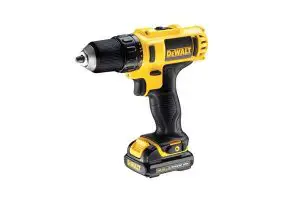Table of Contents
Introduction
A Drill is an instrument used for putting holes in objects. It is employed in different settings by construction companies, homes, woodwork companies, and do-it-yourself engagements. With the aid of a drill, one can place round holes into metals, wood, stone, walls, and other objects.
Click here to read more on Drill
Drills have been in existence for a pretty long time. Now so many modifications have been made, and they now come in diverse shapes, forms and sizes to aid different applications where it is needed.
The First Drill
In the 35,000 BC era, the ancient men found the need for equipment that creates holes in an object or material. They then used pointy rocks enclosed in their hands to do this. They later saw that it wasn’t as satisfactory as they would prefer; hence they thought up another medium known as the hand drill. This hand drill came in the form of a stick attached to a pointy object.
The first machine drill was the Bow drill. You can trace this drill to about 10,000 years ago. Its structure was a stick attached to a cord with a string attached to both ends of the shaft. The popular notion was that this form of the drill was more efficient than the one made by the men of old. Although its uses were enormous, its use primarily became a tool for creating fire; it was applied by makers of woodwork, stonework and even those involved in tooth reconstruction. The bow drill usage has since then spread across several continents with several modifications, of course.
Other Drills Following The Emergence Of The First Drill
Variations of diverse forms have followed after the first drill came to bear. The core drill was made in Egypt in BC 3000, after which the Romans invented the pump drill.
In the 13th Century, the hollow-borer tip made with copper became popular. As times passed, the drill went through many adjustments to better improve its efficiency.
The invention of the churn drill took place in China. This drill was capable of boring holes as deep as 1500m into objects. Beliefs that the Chinese drill was seen in Europe in the 12th Century exist, although there has been no proof.
The electric drill is mostly used now as a result of advancements in technology in this new age. Arthur James Arnot and William Blanch Brain from Melbourne, Australia, in the year 1889 have the credit for this drill invention. Wilhelm & Carl Fein from Stuttgart in Germany then created the first electric drill held by hand in 1895. After that, in 1917, another electric drill with a trigger switch was created by Black & Decker. The electric drill has come to be a go-to appliance due to its portability and efficiency.
How a Drill Works
The modus operandi of a drill is pretty simple. Remember the wheel and axle and how turning the rim of a large wheel causes the axle to turn slowly but with great force. The mechanism of the wheel and axle also applies to a drill. It consists of a large chuck, which causes the bit at its center to rotate, which then transfers energy to the spindle. This spindle moves rotationally to drill holes where you need it to.
When drilling, especially with an electric drill, which is in vogue now, converting electrical power to mechanical energy is how the electric drill works.
How to Maintain a Drill
The drill’s movement in its rotational manner can cause its destruction, mainly if you use it frequently. It becomes ideal to know the ways you can extend the longevity of your drill.
The following are ways by which you can make your drill last longer:
Ensure to Sharpen the Drilling Parts of the Machine
A drill comes with sensitive components, including the bits, lathe tools, precision cutters, etc. Not sharpening your drill will most likely reduce the efficiency of the drill. Therefore, reducing its ability to create holes.
Maintenance of the Electrical System
Check the electrical system of the drill as frequently as possible to prevent damages from occurring. If possible, spare parts of other parts of the drill should be kept around for easy replacement when necessary.
Ensure the Drill is Clean
Always ensure that your drill compartments are clean, and if they aren’t try to clean them as often as possible. Please pay attention to the seals and filters it contains, as they are the most vulnerable parts of the drill. Also, endeavor to replace them regularly, for the drill’s optimal efficiency.
Conclusion
Drills have been helpful in its various modifications in hole punching. For better use and efficiency of your drill, maintain it properly to perform the needful activities you want it to.

